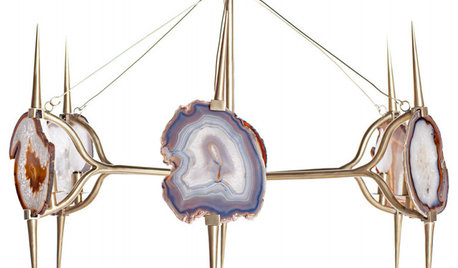Coral Snake bite
goldenpond
16 years ago
Related Stories

DENS AND LIBRARIESRoom of the Day: Princess the Snake Reigns in a Luxe Library
Sure, there are books. But in this library the custom snake habitat may be most worth checking out
Full Story
PRODUCT PICKSGuest Picks: Coral Kitchen Accessories
This pink-orange shade isn't just for beachy spaces — use it to perk up a tabletop or pantry too
Full Story
PRODUCT PICKSGuest Picks: 20 Ways With Agate
The stone is fabled to have powerful healing properties, but it's a fact that it can beautify a home
Full Story
GARDENING GUIDESHow to Keep Your Citrus Trees Well Fed and Healthy
Ripe for some citrus fertilizer know-how? This mini guide will help your lemon, orange and grapefruit trees flourish
Full Story
GARDENING GUIDESHow to Find the Right Native Plants for Your Yard
Find plant maps, sale sites and guides that make going native in the garden easier than ever
Full Story
ROOTS OF STYLEAussie Style: Enduring Appeal of the Classic Queenslander Veranda
Take a look at the elements that make this iconic Australian veranda the ultimate outdoor room
Full Story
HOUZZ TOURSMy Houzz: Cozy Country Meets Bohemian Artistic in Australia
Healthy helpings of salvage and rustic art give a pastureland home free-spirited style
Full Story
LANDSCAPE DESIGNNatural Swimming Pools: More Beauty, No Chemicals
Keep your skin and the environment healthy with a pool that cleans itself, naturally
Full Story
MODERN ARCHITECTUREHouzz Tour: Sensitive Minimalism in the Arizona Desert
Beautifully framed views and a design that sits lightly on the land make for a thoughtfully integrated modern home near Tucson
Full Story
EARTH DAYThe Case for Losing the Traditional Lawn
Work less, help the environment and foster connections by just saying no to typical turf
Full Story







katkin_gw
bihai
Related Professionals
Londonderry Landscape Architects & Landscape Designers · Norfolk Landscape Architects & Landscape Designers · Bridgetown Landscape Architects & Landscape Designers · Fillmore Landscape Architects & Landscape Designers · Bergenfield Landscape Contractors · Davis Landscape Contractors · Galt Landscape Contractors · Norristown Landscape Contractors · Painesville Landscape Contractors · Pleasant Prairie Landscape Contractors · Rosemount Landscape Contractors · Myrtle Beach Decks, Patios & Outdoor Enclosures · Quincy Decks, Patios & Outdoor Enclosures · Rantoul Decks, Patios & Outdoor Enclosures · Perth Amboy Siding & Exteriorsyogacathy
tannatonk23_fl_z9a
wanda662
manature
goldenpondOriginal Author
solstice98
junkyardgirl
manature
junkyardgirl
manature
wanda662
bihai
manature
manature
bihai
manature
atreelady
manature